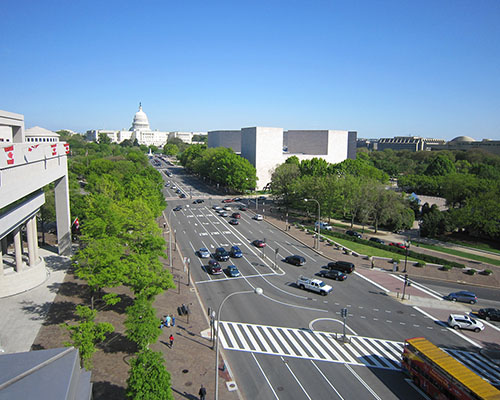Project Details
Abstract
 Selecting a single design vehicle can significantly influence roadway geometry, safety, and user experience. Many roadway designs default to the largest vehicle, under the assumption that this approach will inherently accommodate smaller vehicles and non-motorized users. Yet, larger design vehicles may encourage overbuilt infrastructure, leading to wide lanes, large turning radii, and lengthy pedestrian crossings—conditions that can raise vehicle speeds and reduce pedestrian safety. Conversely, opting for a vehicle that is too small can force larger vehicles to encroach upon adjacent lanes or curbs, increasing maintenance costs and crash risks.
Selecting a single design vehicle can significantly influence roadway geometry, safety, and user experience. Many roadway designs default to the largest vehicle, under the assumption that this approach will inherently accommodate smaller vehicles and non-motorized users. Yet, larger design vehicles may encourage overbuilt infrastructure, leading to wide lanes, large turning radii, and lengthy pedestrian crossings—conditions that can raise vehicle speeds and reduce pedestrian safety. Conversely, opting for a vehicle that is too small can force larger vehicles to encroach upon adjacent lanes or curbs, increasing maintenance costs and crash risks.
This project investigates how design vehicle choices affect roadway outcomes through two main phases. First, it reviews historical, current, and international practices via archival research, engineering manuals, policy documents, and interviews with practitioners. Second, it uses scenario modeling to measure how different vehicle assumptions alter intersection geometry, pedestrian crossings, and operational performance, as well as to evaluate the resulting safety and cost implications. The research will generate evidence-based guidelines for selecting an appropriate design vehicle, thereby optimizing roadway dimensions while safeguarding multimodal users.
By clarifying the downstream impacts of over- or under-designing for specific vehicles, this study aims to improve safety and functionality, minimize unnecessary infrastructure expenses, and align with broader sustainability and equity goals.
Project Word Files
project files
- UTC Project Information (Word, 88K)
Note to project PIs: The UTC document is limited to two pages. Also, it would be helpful if the Track Changes feature is used when editing either document above. Updated documents should be emailed to ndsu.ugpti@ndsu.edu.